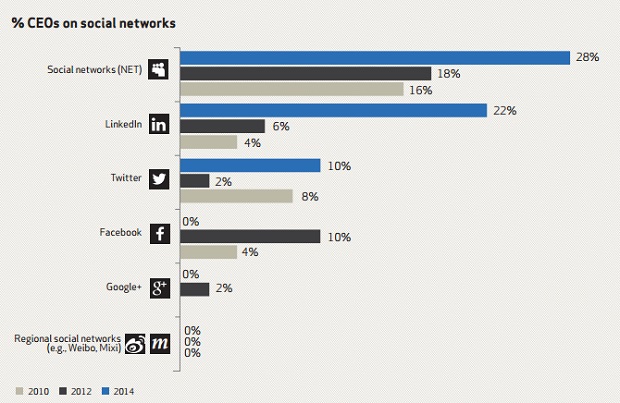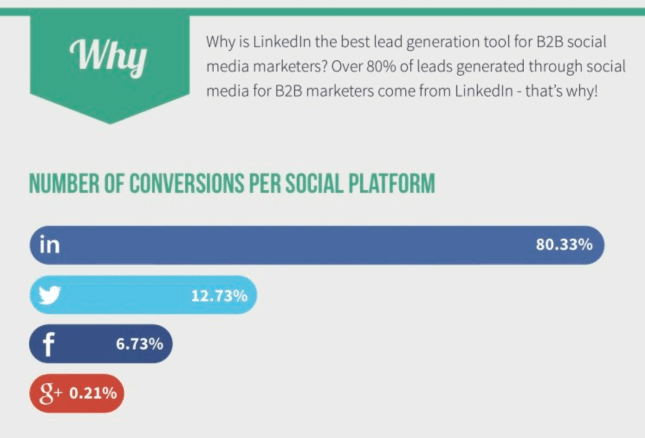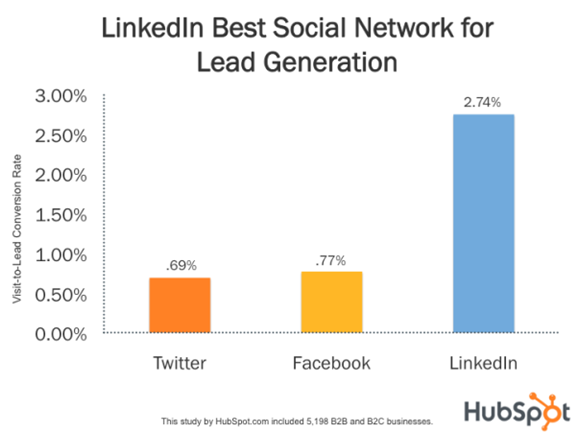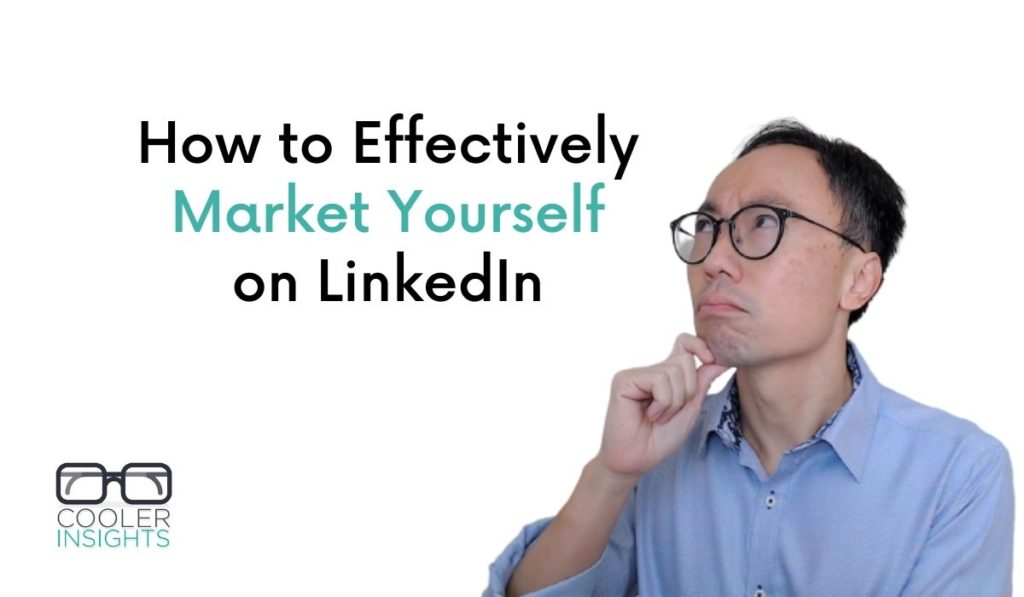
Do you wish to better market yourself on LinkedIn? Wondering how effective LinkedIn marketing can be to build your professional brand or your business?
Celebrating its 12th 19th year, LinkedIn is the most important professional network for individuals and businesses. Unfortunately, many still treat LinkedIn as an electronic rolodex.
Failing to recognise the full potential of the social network, you literally leave career and growth opportunities on the table.
How then should we take advantage of LinkedIn to build a better future for ourselves?
Why LinkedIn is Great for Marketing Yourself
Before we dive into the details of how you can boost your personal brand on LinkedIn, let us look at why LinkedIn is so important for your professional success.
Officially launched on 5 May 2003, LinkedIn is the number one professional social network in the world. Founded by Reid Hoffman, Allen Blue, Konstantin Guericke, Eric Ly and Jean-Luc Vaillant, LinkedIn currently has over 706 million users (end 2020).

Courtesy of Kinsta
Beyond its impressive reach, LinkedIn is also the top social network for CEOs around the world. About 22% of CEOs are active on LinkedIn.
While this is still a small number, consider that the next social network for CEOs – Twitter – has only 10% of them on board. And Facebook? Virtually no head honchos are there (see chart below).
Courtesy of net imperative
LinkedIn also reaches out to over 200 countries and regions. It is widely considered to be the best lead generating magnet for B2B social media marketers. In fact, over 80% of leads generated through social media for B2B marketers come from LinkedIn, as shown below:
Courtesy of Kissmetrics
Comparatively speaking, LinkedIn has a 2.74% visit to lead conversion ratio compared to Facebook (0.77%) and Twitter (0.69%). For B2B marketers and professionals, it sure does sound like a good place to look for business (see chart below from HubSpot).
Now that you are convinced of the power of LinkedIn, what should you do?
#1 Build Professional Looking LinkedIn Profile
The first thing you need to do in LinkedIn marketing is to build a professional looking profile. Now this is probably one of the most painstaking task you will ever do. However, it is certainly well worth the effort.
Here’s how my LinkedIn profile looks. It may not be pretty, but I guess it does the job for me.
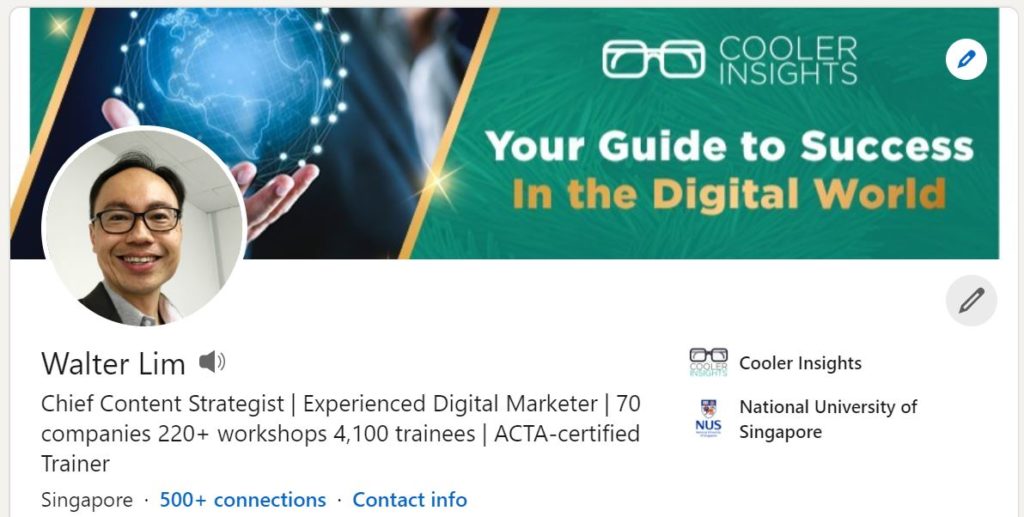
There are several things to take note of when building your profile:
- Make sure that your LinkedIn Headline works in marketing yourself. This is imperative. You can see that I’ve included my strongest selling point and professional status in my LinkedIn headline above.
- Complete all of the sections to make your profile complete. Yes, it can be a major pain in the butt when you first start. A quick way to reduce the time needed is to import your CV and to make adjustments thereafter.
- Improve and refine your profile little by little each day. Don’t kill yourself trying to get everything in all at once.
- Use the right keywords in the section just below your name. This is especially useful if you are a consultant or a professional offering specific services. In my case, I have listed my work as a content strategist as well as digital marketer.
- Fill your summary (more on that below) and past employment. Focus on achievements – not job descriptions.
- If you wish, include past examples of your work. They may include slides, videos, graphics, images, e-Books, white papers and others.
- Make sure that you have a professional looking photo on your profile. Having a photo makes you 14 times more likely to be found.
Now that you’ve got the basics in place, let us visit some of the special sections on LinkedIn.
#2 Write a Keyword Rich About Section
Frequently overlooked, the about section is an important summary of your profile. Often, potential clients or employers will scroll through this topmost section when sussing you out.
With a total limit of 2,000 characters, your about sections needs to speak directly and persuasively to your target audience. Consider the following points:
- Write in the first person perspective to address the pain points of your clients
- List what you can do for clients (or employers) upfront
- Highlight key achievements and milestones, including non-job related experiences (like board directorships and volunteering experiences)
- Use keywords that your prospects would look at
- Use bullet points to make it easier to scan through your profile
- Include your contact information at the end of the summary section
You can see how I wrote the About section on my LinkedIn profile in the screenshots below:
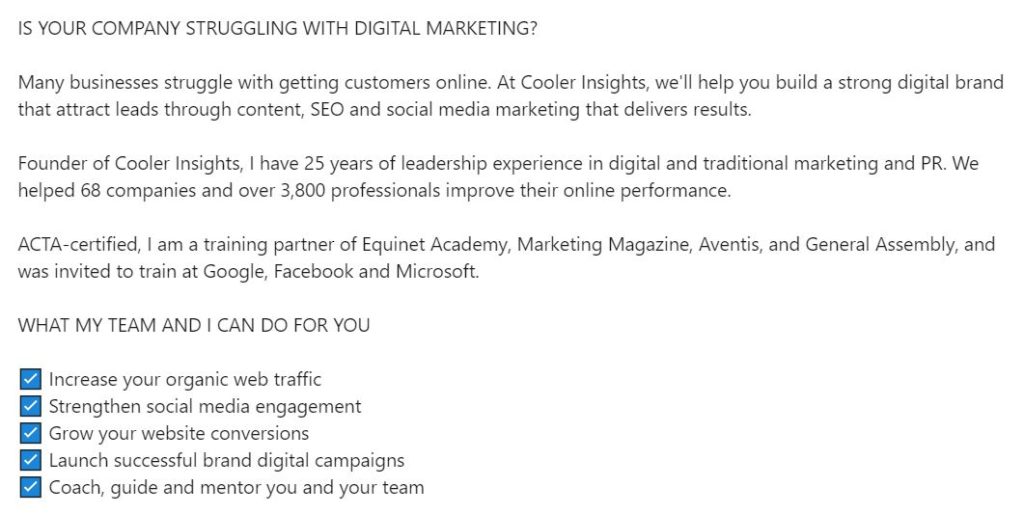
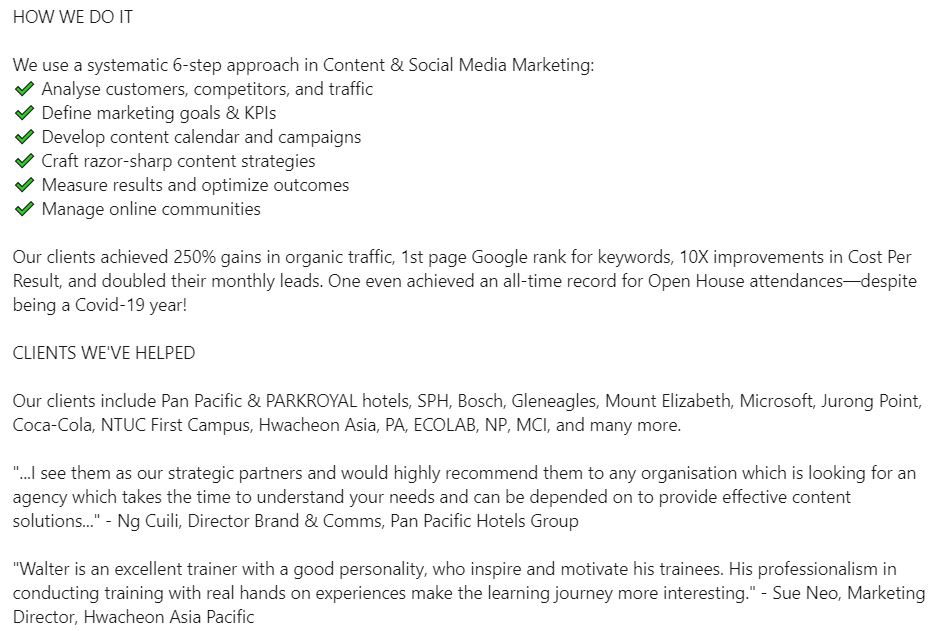

In essence, make sure that you craft a good LinkedIn summary for marketing yourself or your business.
#3 Claim Your Custom URL
This is easy and should be done as soon as possible, especially if you are in the professional services or B2B sector.
In my case, I used my online brand name and monicker (https://www.linkedin.com/in/coolinsights/) to be in my URL. I do this because I try to achieve a consistent nick across all my social media platforms (Facebook, Twitter, Instagram, and LinkedIn).
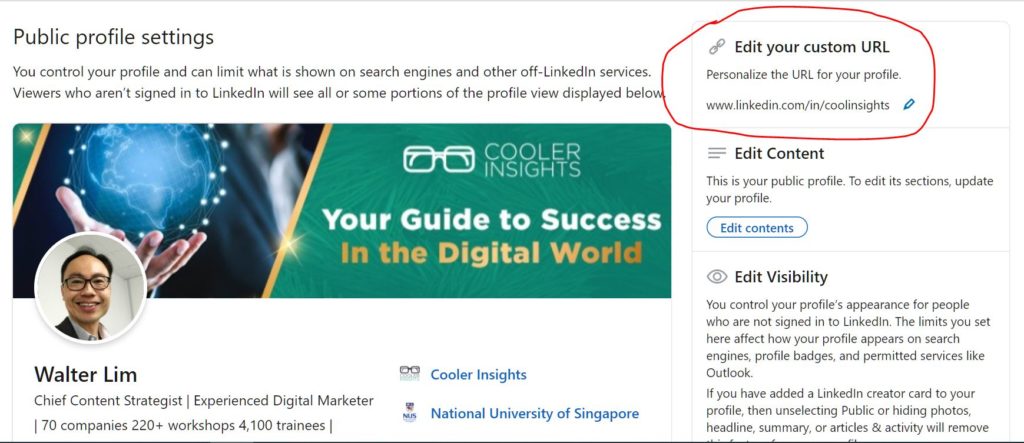
If you are not a blogger, however, you should choose the URL which best identifies you.
By claiming your custom URL, you are much more likely to rank in the top few searches when somebody keys in your name into a search engine.
#4 Connect with the Right People
The power of LinkedIn lies in its ability to connect professionals from across the globe. However, you be discriminating in choosing who you should connect to.
Connect with like-minded folks who have some form of professional or personal relationship with you. They include:
- Current and ex colleagues and bosses
- Clients, suppliers, distributors and other business partners
- Potential clients, mentors, and other influencers
- Friends and family members (at least those whom you have a professional relationship with)
- Former classmates and alumni associates from university, polytechnics or school
If you are extending an invitation to connect to a complete stranger, please do some research on the person. Do not just use the standard message – customise it to share why you are connecting to him or her, and describe a little about what you do.
Initially, I connected mainly with my direct business associates, colleagues, clients and friends. Over time, however, I found folks adding me on LinkedIn rather than the other way around.
By the way, it was found that CEOs on average have about 930 LinkedIn connections each. I’m glad to report that I have almost 8,000 followers on LinkedIn – and growing!
#5 List Your Skills and Endorse Others
Do also list your different skills. LinkedIn members who list their skills receive 13 times more profile views than those who don’t.
With a total of 45,000 standard skills listed on LinkedIn, there are bound to be skills that fit you like a glove.
Once you have listed your skills, you should seek to get yourself endorsed. This can be done by simply requesting for it from your connections, or just by endorsing them first and watching the law of reciprocity work its magic!
Here’s mine:
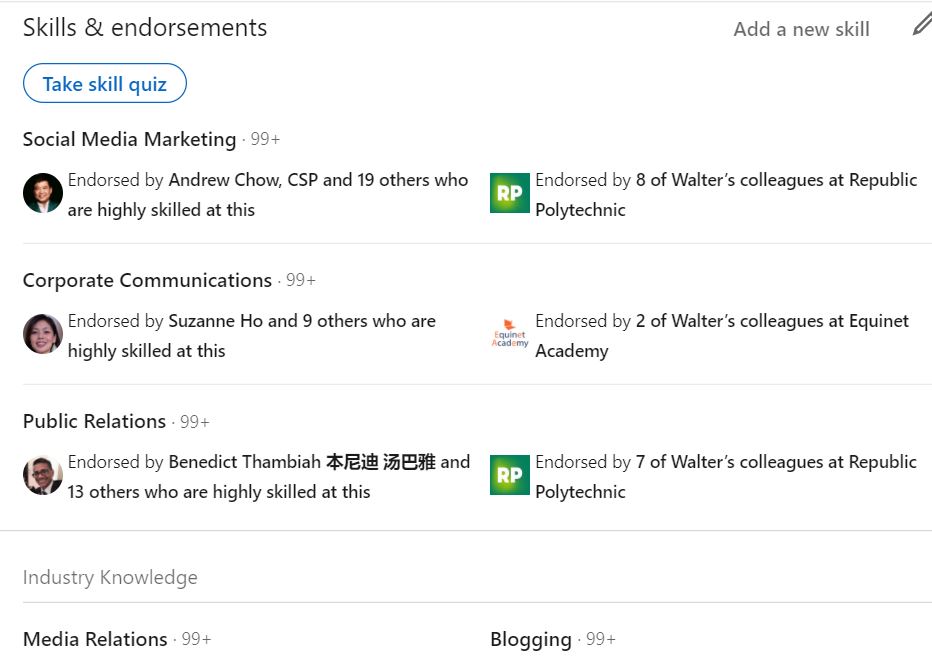
While some may view these endorsements as a gamification gimmick by LinkedIn (and I have no doubt that it is), I must admit that I do look at a person’s endorsements when I suss them out on LinkedIn. I’m sure you do too!
#6 Recommend Others and Get Recommendations
If you want to win people over with your credibility over the years, consider giving and getting recommendations.
When you request for a recommendation from others, do try to make your request as specific as possible. Do also consider how you can cite specific examples and instances of how you’ve helped them.
Recommendations can be sought from your bosses, ex-employees, clients, suppliers, or anybody else in your professional network.
Here are some examples of my recommendations on LinkedIn. I’ve got 48 and I gave out 49 recommendations!

#7 Join and Create LinkedIn Groups
To further harness the social networking capabilities of LinkedIn, consider joining a group related to your industry or business.
Personally, I am a member of 37 different Groups on LinkedIn. I usually join groups that are related to my business or professional interests, and urge you to do likewise.

According to this article, visitors who arrive from LinkedIn groups convert at a much higher rate. Beyond that, LinkedIn groups provide the following benefits:
- Ability to connect with leaders and potential customers in your industry
- Discussions and news on what’s trending in your trade
- Showcase your expertise and experience by answering questions
- Enhance your online networking skills by allowing you to connect to others
- Message members of the groups you are in, even if you are not connected
To bring your LinkedIn game even further, you can consider creating your own LinkedIn group.
Here are 10 reasons to start a LinkedIn group. They include:
- Building and expanding your personal network
- Establishing thought leadership
- Generating leads
- Driving traffic to your websites
- Helping others
#8 Engage with Your LinkedIn Connections
Like any social network, LinkedIn works better if you engage actively with the members of your network. These are the connections which you are connected with on LinkedIn, as well as those whom you seek to engage with.
Here are some things that you can do to deepen relationships with your LinkedIn connections:
- Like and comment on the posts of your connections
- Share their LinkedIn posts on your own profile
- Comment on a discussion in one of your LinkedIn groups
- Start a discussion on a LinkedIn group – yours or others
- Congratulate someone on a new job or anniversary
- Comment on someone’s new profile picture
#9 Write and Publish Articles on LinkedIn Pulse
Like any social network, content marketing is the lifeblood of LinkedIn. With LinkedIn’s own news and blog sharing network Pulse, thought leaders now direct channel to share their articles with their followers.
From my experience in writing articles on LinkedIn Pulse, I find that how tos, trends, news, research and insights work quite well. Posts that ask questions are also effective.
The important thing about writing on LinkedIn or any social network is to keep trying and experimenting. You can see from my own experience that not all articles receive the same levels of engagement.
Oh, and yes, LinkedIn articles are SEO-friendly! Here’s one of my most popular articles on why you should hire a public officer.
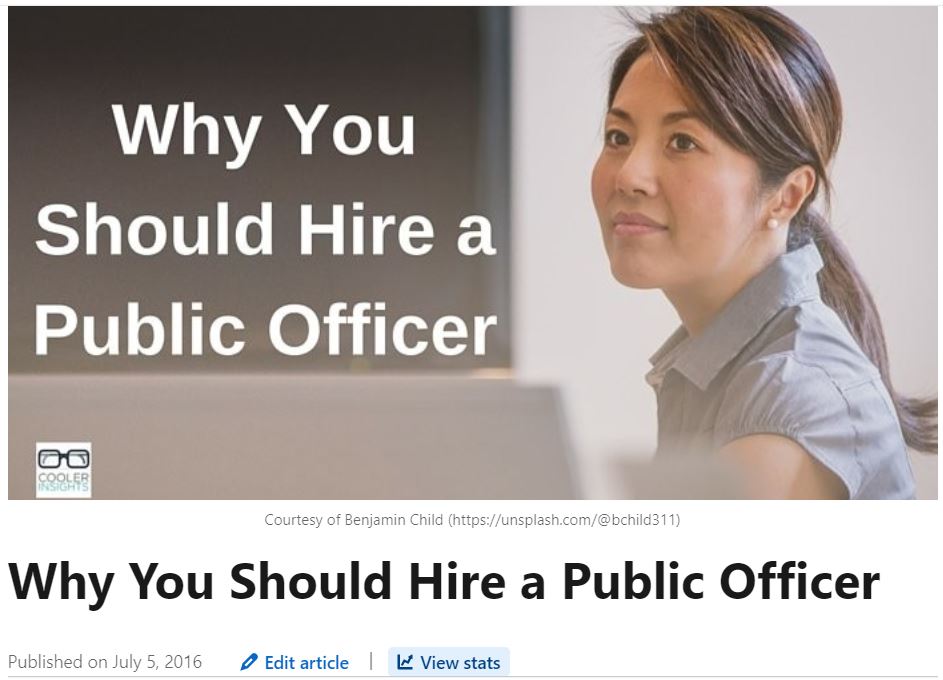
I’ve garnered over 40,000 views, 84 reactions, 43 reshares and 6 comments (to date).

#10 Don’t Hard Sell or Promote Too Much
Last, but certainly not least, you should treat your LinkedIn followers and contacts with respect.
Nobody likes to be hard-sold to on LinkedIn. Neither would they enjoy being interrupted by an unwelcome intruder trying to sell snake oil.
Here are some cardinal rules that I personally adhere to:
- Avoid adding somebody on LinkedIn just to immediately send them a sales message
- Avoid using the LinkedIn Pulse platform to write advertising or sales messages disguised as helpful articles
- Focus your posts on helping others rather than promoting yourself
- Reciprocate with a like or a comment on the posts of those who have engaged with your content
- Follow and engage with their posts FIRST before you seek to connect with them
Let me know how your experience is like marketing your business or yourself on LinkedIn. And do add me as a connection on LinkedIn too!
Need Help with Your LinkedIn Marketing?
Fill in the contact form below for a free 30-minute Skype or Zoom consultation session!

